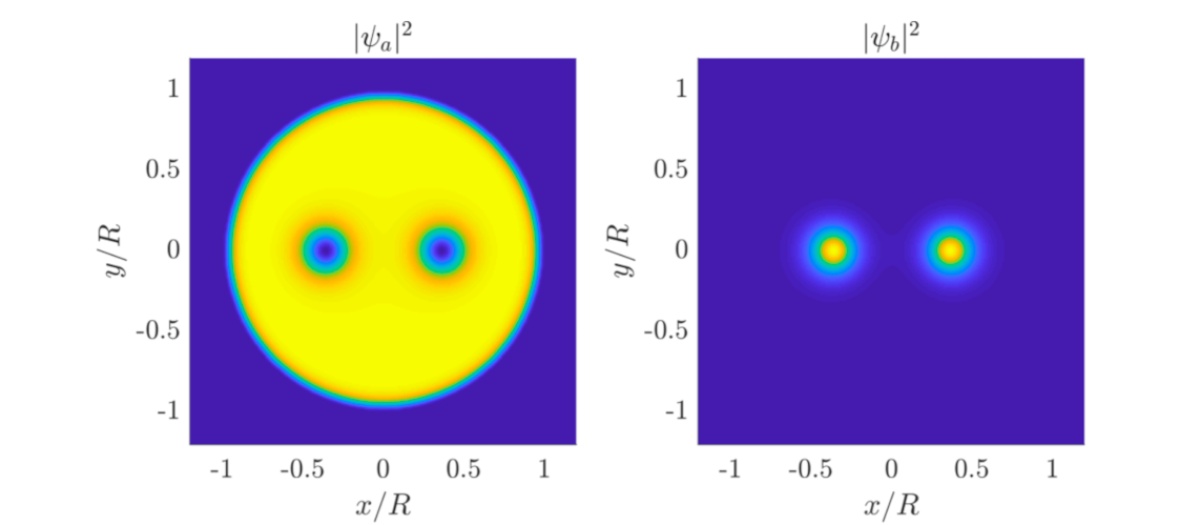
ABSTRACT
In quantum matter, vortices are topological excitations characterized by quantized circulation of the velocity field. They are often modelled as funnel-like holes around which the quantum fluid exhibits a swirling flow. In this perspective, vortex cores are nothing more than empty regions where the superfluid density goes to zero. In the last few years, this simple view has been challenged and it is now increasingly clear that, in many real systems, vortex cores are not that empty. In these cases, the hole in the superfluid is filled by particles or excitations which thus dress the vortices and provide them with an effective inertial mass.
In this talk, I will discuss the dynamics of two-dimensional vortices of one species whose cores are filled by massive particles of a different species. I will show how to derive the effective Lagrangian of the system, based on the time-dependent variational method with a two-component Gross-Pitaevskii (GP) trial function. The resulting Lagrangian resembles that of charged particles in a static electromagnetic field, where the canonical momentum includes an electromagnetic term. I will also show some interesting dynamical regimes. The simplest example is a single vortex within a rigid circular boundary, where a massless vortex can only precess uniformly. In contrast, the presence of a small core mass can lead to small radial oscillations, which are, in turn, clear signatures of the associated inertial effect.
The analytical model is then benchmarked against detailed numerical simulations of coupled two-component GP equations with a single vortex and small second-component core. The presence of such radial oscillations is confirmed, implying that this more realistic GP vortex acts as if it has a small massive core.
References:
[1] A. Richaud, V. Penna, R. Mayol, and M. Guilleumas, Phys. Rev. A 101, 013630 (2020)
[2] A. Richaud, V. Penna, and A. L. Fetter, Phys. Rev. A 103, 023311 (2021)
